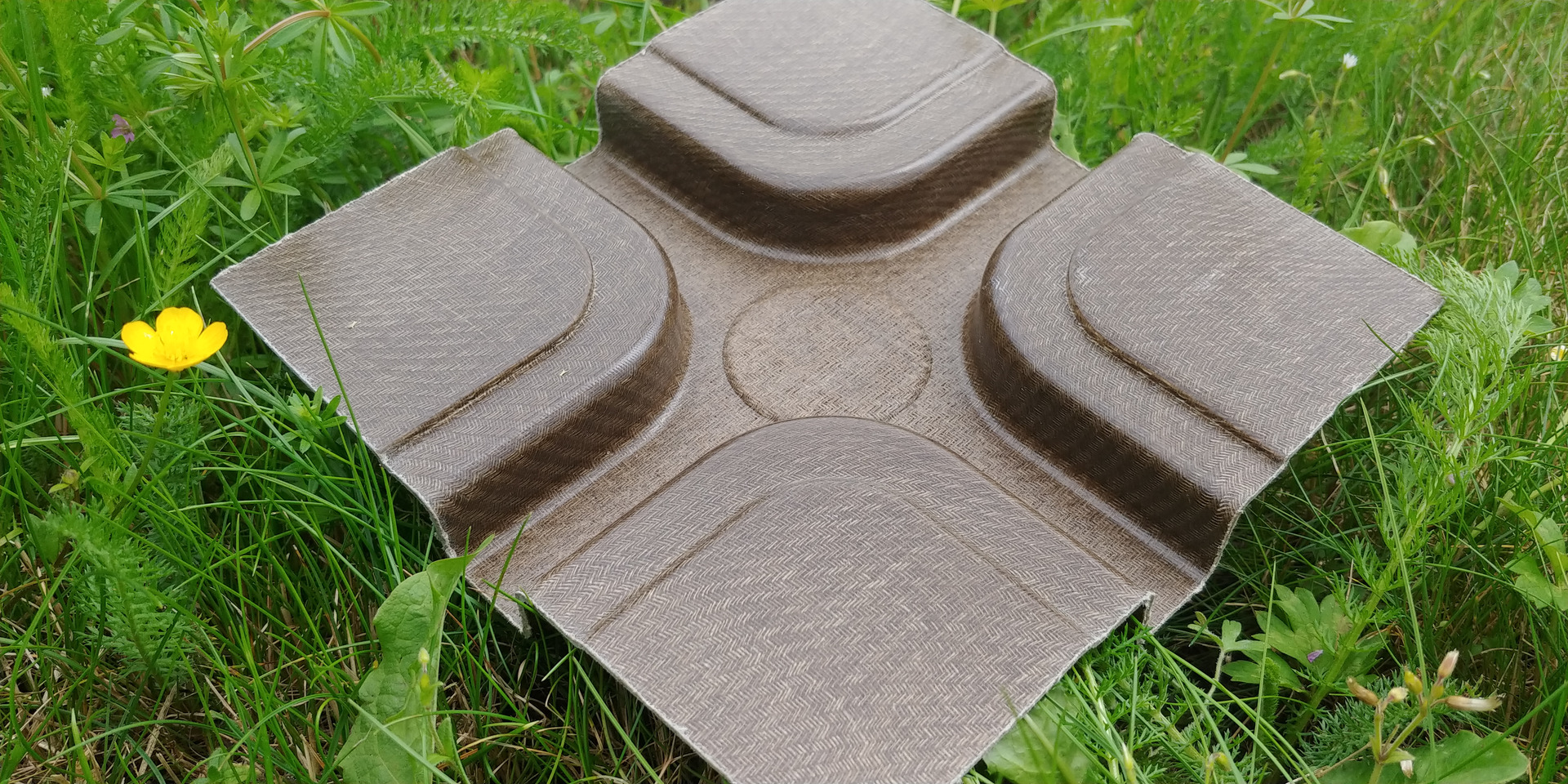- Combination of polylactic acid and flax fabrics
- Lightweight design with good strength and stiffness
- Appealing natural carbon fiber look

Sustainability is an essential part of how LANXESS does business. It is centered primarily on climate protection, energy efficiency, and the circular economy. The company is forging ahead with efforts to use bio-based and renewable raw materials to conserve resources and ensure that its own production processes are no longer reliant on fossil sources. One good example of this is a new product in the Tepex range of continuous-fiber-reinforced thermoplastic composites. “We have combined fabrics made from natural flax fibers with bio-based polylactic acid as a matrix material and thereby developed a composite manufactured entirely from natural resources. We are now able to produce it to a level of quality suitable for large-scale production,” explains Dr. Stefan Seidel, head of Tepex research and development at LANXESS.
Low-density flax fibers
Flax fibers have a significantly lower density than glass fibers. The composites made with these fibers are thus noticeably lighter in weight than their glass-fiber-reinforced counterparts. The flax fibers are used in the form of continuous-fiber reinforced fabrics. This enables the biocomposites to demonstrate the outstanding mechanical performance typical of Tepex, which is based chiefly on the continuous fibers arranged in particular directions. The weight-specific stiffness of the biocomposite is comparable to that of the equivalent glass-fiber-reinforced material variants. Designing the composite components to suit the expected loads enables most of the force to be transferred via the continuous fibers. According to Seidel, “This ensures that the high strength and stiffness characteristic of fiber-reinforced plastics are achieved.”
To be used in cars, industry, electronics, and sports
When coupled with transparent matrix plastics such as polylactic acid, the reinforcing flax fabric yields surfaces with a brown natural carbon-fiber look. “This appearance highlights the natural origin of the fibers and the entire composite and creates added visual appeal in sporting goods, for example,” explains Seidel. In addition to sports equipment, the new biocomposite could be used in cars, such as for manufacturing interior parts, or in electronics for the production of such things as housing components.
Easy to recycle
Like the variants of Tepex based solely on fossil raw materials, the new biocomposites can be completely recycled as purely thermoplastic systems as part of closed-loop material cycles. “Offcuts and production waste can be regranulated and easily injection-molded or extruded, either alone or mixed with unreinforced or short-fiber reinforced compound new materials,” says Seidel.
In the medium term, LANXESS is planning to use other bio-based thermoplastics such as polyamide 11 and other natural and recycled fibers in the production of Tepex.
You can find more detailed information about the Tepex product line and lightweight designs from LANXESS at www.tepex.com and https://lightweight.lanxess.com, respectively.
About Lanxess
LANXESS is a leading specialty chemicals company with sales of EUR 6.1 billion in 2020. The company currently has about 14,800 employees in 33 countries. The core business of LANXESS is the development, manufacturing and marketing of chemical intermediates, additives, specialty chemicals and plastics. LANXESS is listed in the leading sustainability indices Dow Jones Sustainability Index (DJSI World and Europe) and FTSE4Good.
Source
Lanxess, press release, 2021-10-06.
Supplier
Share
Renewable Carbon News – Daily Newsletter
Subscribe to our daily email newsletter – the world's leading newsletter on renewable materials and chemicals













